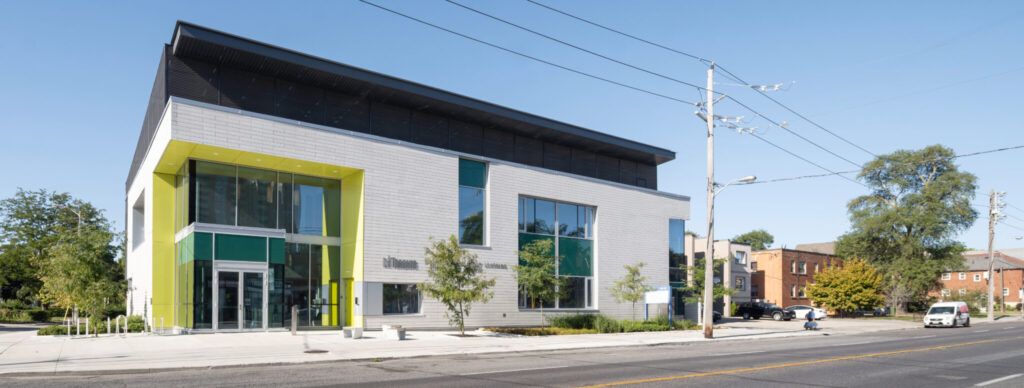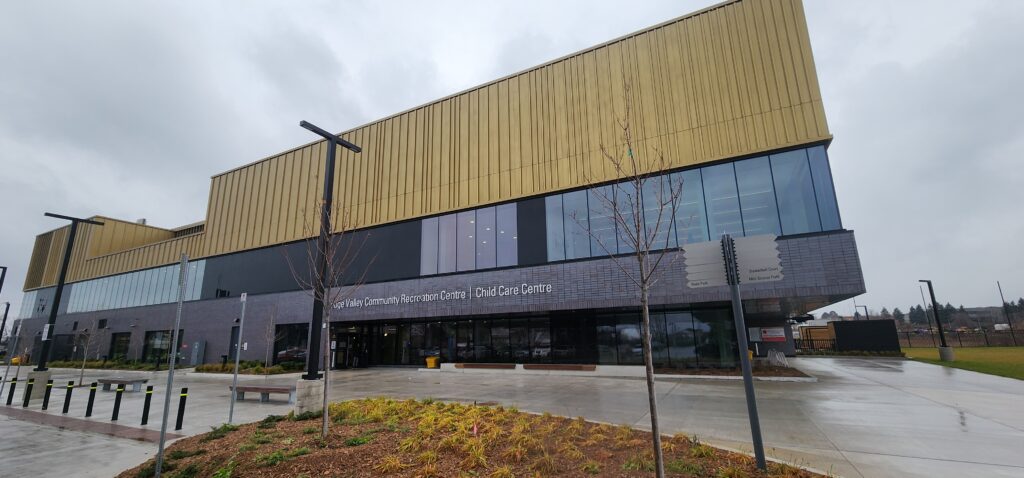
Listen to the whole story here:
Toronto has opened two of its first net-zero public buildings in an effort to expand community services while cutting emissions under its TransformTO climate plan. The Mount Dennis Child Care Centre in York, the city’s largest municipally run child care centre, is one of them.
“It’s going to be much better quality because the lighting will be better, the air will be better, the physical space will be better,” said Amy O’Neil, chair of the Toronto Community for Better Child Care. The centre sits in a neighbourhood she described as “a child care desert.”
But while the Mount Dennis centre shows what a net-zero child-care facility can look like, an architect involved in the building’s design warns the same approach may not be possible elsewhere in the city.
Peter Pastor, principal architect at CS&P Architects Inc., one of the firms behind the building’s design, said, “Quite often we find that net zero will not work with dense urban sites, due to solar shading from taller buildings nearby.” Even where shading is not an issue, multi-storey buildings often lack the roof area needed for solar panels, making the model hard to replicate across the city, according to Pastor.
Dejan Skoric, senior project manager of corporate transformation in the City’s Environment, Climate and Forestry division, said Mount Dennis was intentionally chosen as a pilot before expanding to other facility types. In a written response, Skoric said the project emerged in 2017–2018 as an ideal test site because of three factors: Council’s adoption of the TransformTO Climate Action Strategy, the introduction of the Toronto Green Standard Version 3 — which required City divisions to study net-zero feasibility — and active interest from both the Mount Dennis Community Association and Children’s Services. The centre “serves as a pilot for similar municipal building types,” according to Skoric.
Architects say the building achieves net-zero energy through design choices that aren’t obvious from the street.
“Except for the really thick walls, it does not look that special. Which is part of the point,” said Sheena Sharp, principal architect at Coolearth Architecture Inc., one of the two firms behind the project. She said the goal was to design a strong child-care centre first, with energy modelling layered on top. “First, you can’t have a great net zero childcare until you have a great childcare,” she said.

Pastor confirmed Sharp’s comments. The exterior subtly hints at what is happening behind the walls. In an email to On The Record, he noted that the windows are deliberately limited compared to the wall area, with most windows on the south side to maximize passive heating from low winter sun. He said the roof is also angled to improve solar efficiency.
A second municipal project, the Rouge Valley Community Recreation Centre, illustrates how green design varies by building type. The aquatic hall operates at net-zero energy, while the rest of the facility meets the Canadian Green Building Council’s Zero Carbon Building certification. Skoric points to the project as proof that low-emission design is feasible for complex facilities.


Policy tensions are another obstacle to scaling projects like this. Gaby Kalapos, executive director of the Climate Action Partnership, said Toronto has been “a leader in Canada” on building decarbonization, but warned that recent provincial moves to weaken the Toronto Green Standard could undermine future progress. “The biggest barrier Toronto faces right now… is the impact the provincial government is having on municipal climate leadership,” she said.
O’Neil said better-built centres matter for families and staff. Fees remain capped under the Canada Wide Early Learning and Child Care program. “It improves quality for everyone and access and equity and inclusion,” she said.
Kalapos said public pressure will be critical as the city navigates policy constraints. “I cannot tell you how important it is… to have residents and constituents reach out to their council members to let them know that climate action… is important to them,” she said.
OTR reached out to the Ministry of Municipal Affairs and Housing, but did not hear back in time for publication.
Correction: Mount Dennis Child Care Centre is located in York, Ontario, not Etobicoke as previously stated in this article. OTR regrets the error and apologizes for any confusion this may have caused.
This article was created with the use of OtterAI for transcription.

